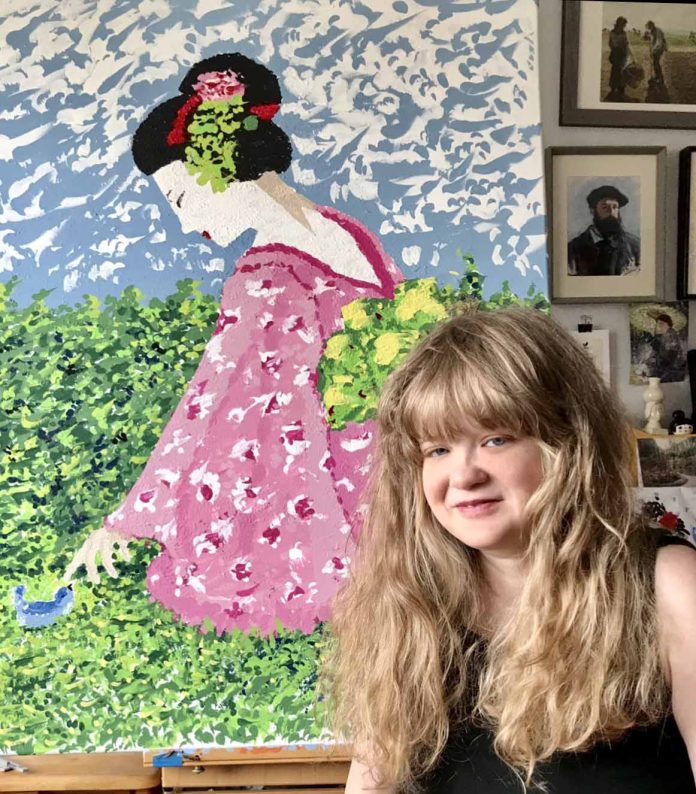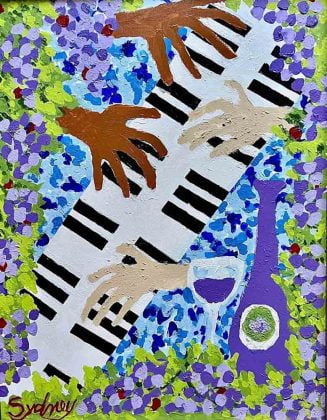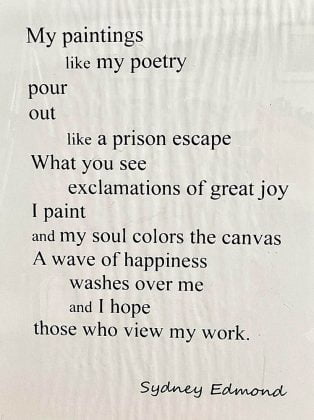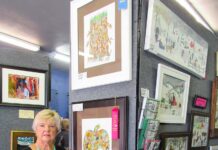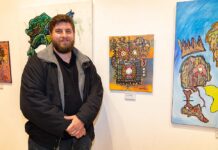Tim O’Leary
Special to the Valley News
How does one function as a storyteller if they cannot speak and their hands and arms twist and turn in an uncontrolled tumult?
They follow the course charted by Sydney Edmond, an autistic poet and painter who has erupted from her dark cocoon and burst into the light of love, discovery and acclaim.
And it was I, a wordsmith who bumps and bumbles in those hallowed halls dominated by MarkTwain and other spinners of yarns, who recently met this master of the word and the brush. It was, of course, in Temecula, the city that President Ronald Reagan once described as a community with a “can do” spirit.
Even the most self-absorbed, Harvard-graduated Ph.D. would be hard-pressed to find anyone with a greater can-do spirit than Sydney. I consider myself lucky to have crossed her path and now be blessed to introduce her to you, my dear friends and kind readers.
I met her at a one-woman show in January at Temecula’s Merc, a combination art gallery and intimate performance venue and ticket sales booth. The Merc serves as the historic front door to Temecula’s amazing Old Town theater, a sprawling facility whose genesis I covered a lifetime ago. Sydney, it turns out, has had other shows at the Merc and elsewhere.
Sydney is 30 years old. She was born in Orange County and moved to Temecula in 2002. She lives here with her mother. A city press release describes Sydney as an award-winning artist and poet who has autism and apraxia.
Apraxia of speech is a speech sound disorder, according to the National Institute on Deafness and Other Communication Disorders. “It is a neurological disorder that affects the brain pathways involved in planning the sequence of movements involved in producing speech,” according to that group’s website. “The brain knows what to say, but cannot properly plan and sequence the required speech sound movements.”
At the recent show reception, Lisa Edmond gave me a glimpse of how her daughter burst from her cocoon of darkness and despair.
For much of Sydney’s life, she suffered in silence, Lisa said. Sydney’s days were shrouded by confusion. And then, nearly a decade ago, a visit to a San Diego art museum sparked Sydney’s interest in painting. She had previously written poetry.
“It’s fantastic,” Lisa said. “Before she communicated I didn’t know she was in such pain.
“It completely opened her world,” Lisa said of Sydney’s newfound communications skills. “I learned that I didn’t know her. Now we’ve gotten to know each other … Sometimes she says it’s like a prison escape and afterwards there was so much joy and happiness.”
I’ll close this humble column now, dear readers, by letting Sydney tell her own story. These words come directly from a flyer Sydney wrote that lists her Facebook page, her email address and the website that sells her art and apparel:
I am an artist, a poet and an autistic woman.
I cannot speak verbally. My brain was silenced as a child but it learned to express itself through typing and art.
I learned to paint after pleasingly peering at paintings in an art museum. Light support lent the necessary link to my brain so I could control my movement. Pouring out my unique perspective onto watercolor paper brought me great joy.
I taught myself through trial and error to reveal my pure visualizations. I am loaded with the ability to see intensely because of my autism. This is a blessing and a curse. It pleases me when it can be put to good use such as this.
Please take what you see here as a message, a spark, to rethink how you see and interact with people who cannot speak and struggle with their bodies. All of us need a way to express ourselves. All of us need to look out upon a world where we matter. Load up our lives with love and give us a loud and influential voice in our lives, in our community, in our world.
Amen, Sydney. Thank you.




